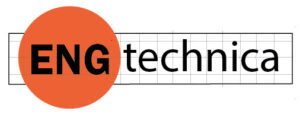
The FGC-9 (for F**k Gun Control 9mm) may be the most popular 3D-printed gun in the world. You can see it being brandished, slapped and fired with great whoops of delight by masked men on YouTube. They look and sound as if they are in the U.S. Its origin can be traced to Germany, but it has gone worldwide. Reports of armed gangs and militias using FGC-9s are coming from Myanmar (formerly Burma), Syria, as well as several countries in Europe.
No country or company takes credit for the FGC-9. It is the spawn of a masked man known until recently as JStark1809. (a reference to Tony Stark? John Snow from the House of Stark?) sometime between 2018 and 2020. Most of the gun’s parts can be made with polymers with a 3D printer. Parts that are pressurized, heated or both, like the barrel, can be easily bought or manufactured. All together, the parts will cost about $500.
The design files have been made open-source and widely shared online, contributing to widespread production. With anyone now able to produce a lethal assault weapon with only a 3D printer, the FGC-9 has sparked concerns among law enforcement and policymakers. The gun is untraceable; it manufacture unlimited and its ability to slip through metal detectors worrisome. The FGC-9 has been lumped with “ghost guns,” though ghost guns are mostly made with metal parts.
The FGC-9 is the next-generation homemade weapon, more like an assault rifle weapon than the first 3D printing scare, the Liberator, which was only a single-shot handgun. The FGC-9 will fire 9mm rounds as fast as you can pull the trigger.
We watch a trigger-happy YouTuber gleefully emptying a 40-round magazine on what sounds like metallic targets, marveling at the gun’s reliability and, literally, it being cool under fire – quite important for a plastic gun.
The FGC-9 is not the first semi-automatic assault weapon, but it is the first to have so many of its parts 3D printed.
Skirting Laws
In the U.S., it is legal to 3D-print guns for personal use under federal law as long as the firearm is not sold, transferred, or made for commercial purposes. However, the weapon must contain enough metal to be detectable by metal detectors, which makes fully plastic guns illegal under the Undetectable Firearms Act, signed into law by President Ronald Reagen in 1988. States can be stricter yet. In California, 3D-printed firearms must be registered and assigned a serial number, even for personal use. New Jersey and New York have also passed stricter laws to protect against homemade and ghost guns.
3D-printing guns is illegal in most of Europe. The U.K. vies with Germany to have the most stringent regulations against the creation or possession of unregistered firearms, including 3D-printed ones. Individuals found making or possessing such firearms can face severe legal consequences,
In Japan and Australia, even having drawings, files or computer models of 3D-printed weapons can be illegal.
How to Stop the FGC-9?
With anyone with a 3D printer able to skirt the laws against undetectable, untraceable guns, what can be done to control their proliferation? Perhaps a law that 3D printers have to be registered? This is precisely what the State of New York tried with a bill introduced a little over a year ago. That bill still needs to be passed.
3DPrinterOS and Montclair State University think they have a better way. They are working together to limit the production of 3D-printed guns and gun parts by developing an innovative algorithm designed to identify firearm components created through 3D printing. This algorithm will use unique design signatures to detect gun parts, aiming to enhance safety and regulatory compliance.
The announcement does not mention the FGC-9 specifically.
The project is being conducted in Montclair State University’s MIX Lab, which is known for its research in digital fabrication and prototyping. This effort targets improved tracking of firearm components, benefiting manufacturers, regulators, schools, and law enforcement agencies.
“We believe that this collaboration will pave the way for safer 3D printing practices,” said Rene-Oscar Ariko, VP of Global Sales at 3DPrinterOS. “By working closely with the MIX Lab at Montclair State University, we can harness academic expertise to create a robust solution that addresses a critical issue in our society.”
“This partnership allows us to explore the intersection of technology and public safety,” adds Jason Frasca, co-director of the MIX at Montclair State University. “We are excited to contribute our knowledge to develop a system that can make a real difference in identifying and mitigating risks associated with 3D printed firearms.”
The algorithm developed by 3DPrinterOS and Montclair State University will work by analyzing 3D-printed objects to identify specific design characteristics associated with firearm components. This involves using advanced pattern recognition and machine learning techniques to detect unique signatures in the STL files that correspond to known gun parts.

